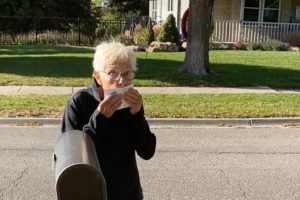As an interventional radiologist, I see many patients who suffer with lower back pain. It is immensely rewarding to offer my patients treatment options that:
- Are effective
- Done as an outpatient procedure with short recovery times
- Provide immediate pain relief
- Reduce the need for opioid pain medications
An interventional radiologist is a doctor that performs minimally invasive procedures through small nicks in the skin while using image guidance such as real-time x-ray, ultrasound or CT. Most procedures are outpatient and can be performed with just a local anesthetic.
Causes and Treatment Options for Lower Back Pain
A good physical exam with the addition of proper imaging of the spine when needed helps determine the cause of back pain. Initial diagnostic and treatment options may include:
- Fluoroscopy – A technique that uses x-rays to obtain real-time moving images of the body
- CT-guided steroid facet joint injections – Facet joints are part of the spine’s bony framework; the injection uses local anesthetic
Low Back Pain and SI Joint Pain
The sacroiliac joint (also known as SI joint) is the joint between two bones which are located in the back of your pelvis, on the left and right side. SI joint pain includes lower back pain that feels dull and aching. It can also spread to the hips, buttocks and/or groin. Some of the most common areas where you might feel SI joint pain is in the buttocks, lower back or side of the thigh.
Low Back/SI Joint Pain Treatment
If steroid injections relieve lower back pain for only a short time, a rhizotomy procedure can be performed to relieve the pain for a longer period of time. A rhizotomy procedure involves placing special needles that heat up the sensory nerves. This effectively burns a small segment of the nerve so that pain impulses can’t be sent. Pain relief lasts until the small segment is healed, which usually takes one to two years.
Sciatica
Sciatica is pain, numbness or tingling caused by a problem with the sciatic nerve. This is a large nerve that runs from the lower back, through the buttocks and down the leg. Sciatica is most commonly related to a compressed nerve in the lumbar spine from a herniated disk.
Sciatica Treatment
If physical therapy or over the counter anti-inflammatory/pain medications have not been effective, an epidural injection of steroid/anesthetic can help confirm the diagnosis and offer temporary and sometimes long-term relief.
Lumbar Spinal Stenosis
Lumbar spinal stenosis is narrowing of the spinal canal, or passageways in the spine. These passageways contain the spinal cord and nerves. The narrowing is most often caused by degenerative changes in the spine as we age. The spinal cord and the nerve roots that exit the spinal canal can become pinched. Symptoms include pain, numbness and/or cramping in the legs when walking or standing. Sometimes the symptoms can be relieved by leaning forward when sitting or walking, such as leaning over a shopping cart to decrease the pain.
Lumbar Spinal Stenosis Treatment
For moderate spinal stenosis, a small implant about the size of a dime can be placed between the bones (spinous processes) in your lower back. These bones can be felt by placing your fingers down the center of the back. The implant increases the space where your nerves exit the spine, relieving your pain.

Osteoporosis
Osteoporosis affects more than 50 million people in the United States. As we age, our bones become thinner, increasing the risk of spinal compression fractures. These fractures can result from a fall, lifting something or sometimes from no event at all. If you have severe back pain that gets worse when you move, this could be caused by a compression fracture.
Treating Compression Fractures of the Spine
Minimally invasive treatments such as kyphoplasty and SpineJack vertebral augmentation stabilize the fracture and decrease pain. These procedures insert bone cement into the proper areas of the spine to ease your pain. The procedures take less than an hour. Most patients have immediate pain relief and go home the same day.
View videos to learn more about these procedures and how they relieve pain
Kyphoplasty Treatment: Esther’s Story
SpineJack Treatment: Duane’s Story
Get Relief for Your Lower Back Pain
If you suffer from back pain and would like to learn more about our minimally invasive therapies to relieve your pain, call Bryan Interventional Radiology at 402-481-3095.
To schedule a consultation, call the Bryan Scheduling Center at 402-481-5121.
Interventional Radiologists
Advanced Radiology at Bryan Medical Center
Being at the forefront of advances in medicine allows Advanced Radiology to offer patients the latest treatments in addition to current treatments. Dr. Budler was one of the first 10 physicians in the United States and the first in Nebraska trained on the SpineJack procedure. The Advanced Radiology team has the most experience in Nebraska in performing vertebral augmentation procedures like the SpineJack to relieve back pain.
Meet interventional radiologists of Advanced Radiology at Bryan Medical Center: Michael Budler, MD; John Allen, MD; Kyle Pfeifer, MD; Jeffrey Himmelberg, MD!












